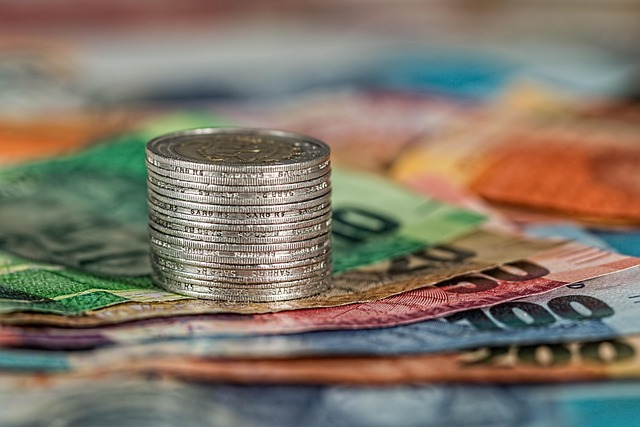Equipment financing is a flexible solution for businesses seeking to acquire essential assets like machinery or technology without upfront costs. By spreading financial obligations over time, this method supports growth, expansion, and modernization. Catering to all business sizes and industries, it offers customized approaches with significant tax advantages, enhancing cash flow management and long-term financial health through deductible payments. Effective equipment acquisition involves strategic planning, research into specialized lenders, detailed proposal crafting, and careful term negotiation. Successful equipment management uses IoT sensors and cloud platforms for real-time tracking to prevent breakdowns and minimize costs. A strategic plan including leasing or financing options aligns acquisition with growth plans, future-proofing operations and maximizing ROI.
Equipment acquisition is a pivotal strategy for business growth, enabling companies to access cutting-edge tools and technology. This article delves into the world of equipment financing, exploring its benefits for businesses across various sectors. We’ll guide you through the process of navigating different types of business equipment, securing financing, and implementing effective management strategies for long-term savings. By understanding equipment acquisition, businesses can unlock their full potential and thrive in today’s competitive market.
- Understanding Equipment Financing and Its Benefits for Businesses
- Navigating Equipment Acquisition: Types of Business Equipment
- The Process of Securing Equipment Financing: Step-by-Step Guide
- Strategies for Effective Equipment Management and Long-Term Savings
Understanding Equipment Financing and Its Benefits for Businesses

Equipment financing offers a strategic solution for businesses seeking to acquire essential assets, such as machinery or technology, without the burden of upfront costs. This method allows companies to secure and own critical equipment while spreading financial obligations over time. By leveraging this financing option, businesses can access the tools they need for growth, expansion, or modernization, ensuring operational efficiency and competitive advantage in the market.
One of the key benefits is its flexibility, catering to various business sizes and industries. Whether it’s a small startup requiring initial investments or an established enterprise aiming for upgrades, equipment financing provides a customized approach. This funding method also offers tax advantages, as the payments are often deductible, further improving cash flow management and long-term financial health.
Navigating Equipment Acquisition: Types of Business Equipment

Navigating Equipment Acquisition: Types of Business Equipment
When it comes to equipment acquisition, businesses have a wide array of options to choose from. This process involves identifying critical areas of operation that require specialized tools or machinery to enhance productivity and efficiency. From manufacturing plants needing robust machines to service providers requiring advanced technology for client interactions, the types of business equipment vary vastly. Understanding this diverse landscape is crucial for effective equipment financing strategies, ensuring each dollar invested contributes directly to seamless business growth.
Whether it’s purchasing new or leasing existing assets, businesses must consider the specific needs of their operations. This may include production lines demanding state-of-the-art machinery, transportation fleets requiring cutting-edge vehicles, or retail establishments seeking modern point-of-sale systems. By aligning equipment acquisition with business objectives, companies can optimize their financial resources and stay competitive in today’s dynamic market.
The Process of Securing Equipment Financing: Step-by-Step Guide

Securing equipment financing for your business growth is a strategic move that involves several steps. First, assess your equipment needs and budget to determine the type and cost of the machinery or vehicles required for operations. This step is crucial as it sets a clear scope for your financing goals. Once you have a defined list of assets, start researching available lenders. Look for financial institutions specializing in equipment acquisition financing, offering various options like loans, leases, or operational leases tailored to business needs.
Next, prepare your financial documents, including tax returns, income statements, and balance sheets from the past few years. These records provide lenders with a comprehensive view of your company’s financial health, which is essential for approval. Craft a detailed proposal outlining your project, its expected outcomes, and how the equipment will contribute to business growth. Be ready to negotiate terms, including interest rates, repayment periods, and security requirements. Ensure you understand the conditions before finalizing the agreement to facilitate a seamless equipment acquisition process.
Strategies for Effective Equipment Management and Long-Term Savings

Effective equipment management is key to unlocking long-term savings for any business. The first step involves implementing a robust asset tracking system. This allows businesses to monitor equipment location, condition, and maintenance needs in real time. By utilizing technology like IoT sensors and cloud-based platforms, companies can predict and prevent costly breakdowns, extending the lifespan of their assets. Regular maintenance checks and timely repairs are essential strategies to ensure optimal performance.
Additionally, a strategic equipment acquisition plan is vital. Businesses should consider leasing or financing options instead of traditional purchasing methods. This approach provides flexibility, allowing companies to upgrade to newer technology as it becomes available without significant capital outlay. By aligning equipment acquisition with business growth plans, companies can future-proof their operations, maintain competitive edges, and maximize return on investment over time.






